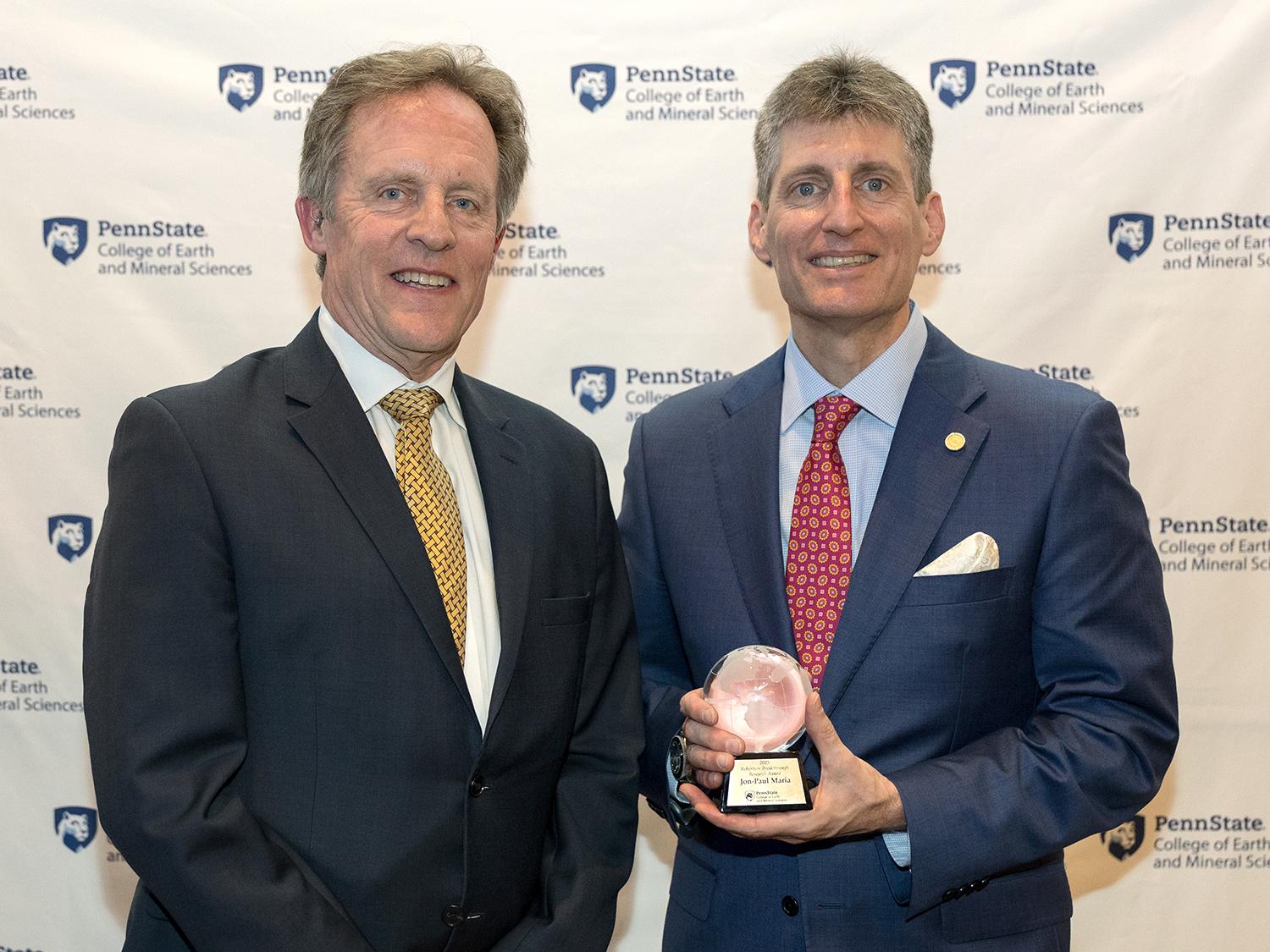
Lee Kump (left), the John Leone Dean in the College of Earth and Mineral Sciences, and Jon-Paul Maria, professor of materials science and engineering, at the Wilson Awards.
Energy powers everything—from the vehicles we drive and the heat in our homes to the data flowing through our computers and phones. Conserving energy is critical to our future. Yet, the demand for computational power—driven by AI servers, the Internet, and other technologies—is expected to triple by 2050.
A recent research breakthrough at Penn State, led by Jon-Paul Maria, professor of materials science and engineering, may change the trajectory of that energy demand. His team’s discovery in the field of ferroelectrics, called proximity ferroelectricity, has significant implications for energy-efficient computing.
Because of this breakthrough, Maria received Penn State's College of Earth and Mineral Sciences (EMS) Paul F. Robertson Award for Research Breakthrough of the Year. This award recognizes outstanding achievements for a singular breakthrough in research or in the scholarship of teaching. It was established in 2012 through a generous gift from EMS alumnus Paul F. Robertson.
Ferroelectrics were first identified more than a century ago. These materials exhibit a spontaneous electric polarization—positive and negative charges that can be reversed when an electric field is applied—similar to how a magnet has north and south poles. Today, ferroelectrics are vital in applications ranging from memory storage to medical sensors. However, only a limited number of materials exhibit ferroelectric properties, which restricts innovation in next-generation technologies.
Maria’s team has discovered a way to induce ferroelectric properties in a material that does not naturally possess them—by stacking it with a ferroelectric material. This novel method allows the ferroelectric behavior to extend into adjoining layers.
“By sandwiching one layer of zinc oxide between two layers of zinc magnesium oxide, we can turn on ferroelectricity in the entire stack, even though only 3% of the volume is ferroelectric on its own,” Maria said. “Ferroelectricity has been observed and researched for 100 years, and this has never been seen.”
This means just a sliver of ferroelectric material can assign its properties to the entire stack. That opens the door for new technologies and advances for existing technologies, especially in one area, computation and data storage.
The energy barrier for data processing has long been a limiting factor. Proximity ferroelectrics offer a promising path forward.
“Proximity ferroelectricity offers us access to dramatically lowered coercive field values. Lowering these values is critical for integrating these materials with mainstream semiconductors,” Maria said. “If we can achieve that integration, then we can realize the energy savings that we anticipate.”
Maria emphasized that this discovery only scratches the surface. His lab is actively exploring new formulations and potential applications of the technique.
In 2023, Maria received Penn State’s Faculty Scholar Medal for proving that ferroelectrics can operate at significantly lower voltages and energy levels—another landmark step toward energy-efficient electronics.
“As researchers, we spend our careers trying to make an impact,” said Maria. “In my view, it’s no different than an artist making a film or a song or a painting. It requires tremendous creativity and hard work. We spend our careers trying to push the boundaries of discovery and make a positive impact.”

